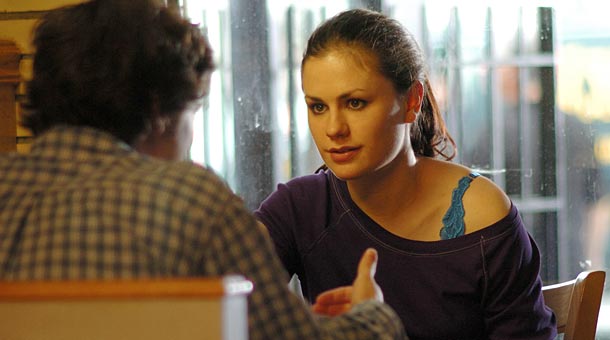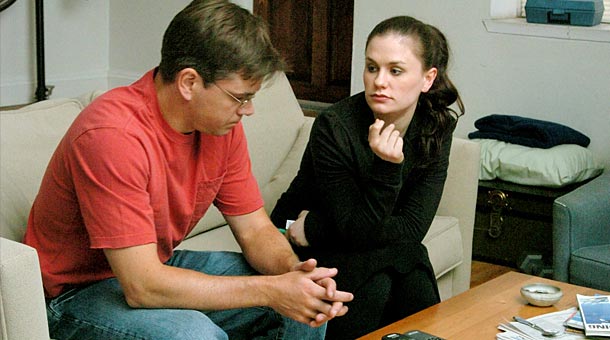How the Extended Cut of Margaret restores its scope and ambition

With its release on Blu-Ray and DVD last week, Kenneth Lonergan’s Margaret has once again caused a stir online. By now the story behind the film’s troubled post-production, lawsuit and stillborn release have been regurgitated so many times it feels like a formality to explain what happened (The New York Times did a piece here that does an excellent job going into detail about the film’s history). Of course some basic facts have to be told just to give a sense of why Margaret has such a devoted following.
Kenneth Lonergan shot Margaret in 2005 and was contractually obligated by Fox Searchlight to create a final product that was under 150 minutes. It took him nearly three years to finally hand in a cut that met the studio’s requirements, but by this time producer Gary Gilbert, Fox Searchlight and Lonergan were in court over the film. Margaret was shelved for another three years until Fox Searchlight released cut Lonergan handed in years earlier into theatres for a very brief run last fall. Some critics began hailing it as a masterpiece and, by the end of the year, a small but vocal group of the film’s supporters convinced Fox Searchlight to schedule more screenings.

Earlier this year Searchlight announced that a Blu-Ray of Margaret would be released with a DVD containing an extended cut. The extended version would run 186 minutes, adding over a half hour worth of new footage and hopefully grant Lonergan the freedom to finish the film he wanted to make seven years ago. It was a pleasant surprise, and a generous move on Fox Searchlight’s part considering the amount of grief the film has put their company through.
I decided to watch the extended cut first, figuring that it was the director’s cut when it actually wasn’t the case. As Lonergan explained in a recent interview with Indiewire,
“The cut that was released was the cut I delivered. They’re both the director’s cut; they’re just different cuts. One of them was just free from the constraints of worrying about the time.”
Of course, the cut that Lonergan delivered was only done out of necessity rather than choice. Having seen both cuts now, it’s easy to understand why it took so long for Lonergan to hand in a version he was satisfied with.
As Margaret starts we are first introduced to Lisa Cohen (Anna Paquin) when her math teacher Mr. Aaron (Matt Damon) confronts her about cheating on her math test. Lisa is dismissive as she tells her teacher that none of what he teaches has any application in the real world. She leaves, and we see bits and pieces of the rest of her school day. After school she goes shopping for a cowboy hat to wear when she goes horseback riding with her father (played by Lonergan himself) but comes up short. She notices a bus driver (Mark Ruffalo) wearing a cowboy hat and she starts to chase the bus down, screaming and waving at the driver. He waves back, but fails to notice the red light ahead and runs over a woman (Allison Janney in a memorable cameo).
The bus accident is one of the first key moments where the two cuts differ. As Lisa is holding the woman and the attempts by two pedestrians to stop the bleeding fail, the traffic around them starts getting louder as more and more car horns start to blare on the soundtrack. In the theatrical cut the effect is there but it’s mixed into the rest of the background noise. In the extended cut the noises get so loud in the mix that it threatens to drown out the dialogue.
The extended version’s aggressive sound mix heightens the anxiety of the scene and gives a clear sense of what’s going to happen over the rest of the film. In Margaret the crash turns into a reality check for Lisa. Her naïve, selfish view on things is shattered again and again the more she tries to restore her life before the accident. As the woman starts to slip away and the horns blare on the soundtrack, Lisa breaks down completely. For Lisa it’s a horrifying situation knowing that her actions were responsible for a brutal death. To everyone around her, it’s a tragic accident and nothing more. As the crowd around Lisa forms a cocoon blocking off everything around her, we can hear the outside world screaming to break through. The world might have stopped for Lisa at this moment, but everyone else has to keep moving.

The extended cut’s sound mix’ purpose is evident, and it explicitly lays out what Lonergan wanted to do originally. Lisa’s story isn’t any more or less important than anyone else’s. One of the scenes missing from the theatrical cut slowly pans across Lisa’s apartment building from the outside. As the camera moves past each window we can hear bits and pieces of the conversations going on in each apartment. Eventually the camera settles on Lisa’s apartment where she’s talking to her mother (J. Smith-Cameron). It feels like the camera isn’t tied down to Lisa in any way, as if it simply chose to focus on her when it could follow someone else at a moment’s notice.
These kinds of moments are why I think Lonergan took so long to hand in a cut he was satisfied with. By removing or minimizing that aspect of the film it would fail to show what he wanted to get across in the first place. Another scene at a restaurant where Lisa is talking to a classmate is dominated by the sounds of other customers so much that it takes almost two minutes before we hear a single word of Lisa’s conversation. It’s moments like this that show just how significant the differences between the two cuts are.
The theatrical cut, which is a good film on its own, doesn’t have the same expansive feeling as the extended version. Several subplots are chopped down including a romance between Lisa’s mother and a Colombian businessman (Jean Reno). Character motivations are sometimes muddled since the scenes explaining them stayed on the cutting room floor. The worst example of the theatrical cut’s editing comes towards the end of the film when Lisa confesses something that was never mentioned up until that point. In the theatrical cut it isn’t known whether or not Lisa’s confession is true, but the extended cut clears up any doubts one might have had about the scene.
Each of these edits unfortunately takes away what makes Margaret such a great film. Lonergan clearly wanted the film to be a big, sprawling piece that reflected the messiness of real life. By taking away the subplots and focus on Lisa’s surroundings it shrinks the film’s universe when it needs to be as large as possible. The theatrical cut makes Margaret feel more like Lisa’s story while the extended repeatedly states that it’s anything but. In one scene Lisa gets into an argument with Emily (Jeannie Berlin, who has one of the strongest presences in the film),a friend of the woman hit by the bus. She yells at Lisa that everyone around her isn’t a supporting character in the story of her life. In the theatrical cut the line feels more like someone dressing down Lisa, while the extended cut makes it feel more like a summary of what Margaret is trying to accomplish.
It would be a waste of time to go on about what could have been if Margaret didn’t take almost seven years to come out. It’s unfortunate that the film was robbed of any chances of getting awards recognition (especially for Paquin and Smith-Cameron), but the fact that Margaret is available to watch in a version longer than 150 minutes is a small miracle. In the context of the extended cut it’s hard to see the theatrical version as anything but a director’s vision being muffled. While Margaret‘s status as a masterpiece may be up for debate, the 186-minute version definitely feels closer to earning that status than the contractually-obligated one.
